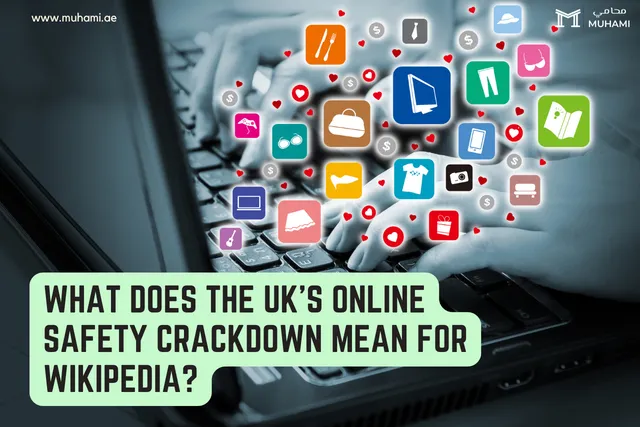Why Every Business Should Include Gamification in Their Growth Strategy

In an increasingly competitive business landscape, companies are constantly seeking innovative ways to engage customers, motivate employees, and enhance overall performance. One powerful tool that has gained significant traction in recent years is gamification—the application of game-design elements in non-game contexts. From increasing customer loyalty to boosting employee productivity, gamification can play a pivotal role in a business's growth strategy. This article explores why every business should consider incorporating gamification into its operational framework.
Understanding Gamification
Gamification leverages game mechanics—such as point scoring, leaderboards, and challenges—to motivate and engage individuals in a non-game environment. By tapping into the natural human desire for competition, achievement, and reward, businesses can create a more engaging and interactive experience for their customers and employees.
Key Benefits of Gamification
1. Enhanced Customer Engagement
Incorporating gamification into customer interactions can significantly enhance engagement levels. By introducing elements like rewards, challenges, and interactive experiences, businesses can create a more compelling environment that encourages customers to participate actively.
- Loyalty Programs: Many companies use gamified loyalty programs that allow customers to earn points for purchases, which can be redeemed for rewards. This not only incentivizes repeat business but also creates a sense of achievement.
- Interactive Marketing Campaigns: Brands like Starbucks and Nike have successfully implemented gamified marketing campaigns that encourage customer participation through challenges and social sharing, driving brand loyalty and community engagement.
2. Improved Employee Motivation and Productivity
Gamification isn't just beneficial for customer interactions; it can also transform the workplace. By introducing game mechanics into training, performance tracking, and team collaboration, businesses can boost employee motivation and productivity.
- Training and Development: Gamified training programs can make learning more engaging. For example, using simulations or quizzes allows employees to acquire new skills while enjoying the process, leading to higher retention rates.
- Performance Tracking: Implementing leaderboards and achievement badges can foster healthy competition among employees. Recognizing top performers can motivate others to elevate their performance, ultimately driving overall productivity.
3. Enhanced Customer Insights
Gamification can provide valuable insights into customer behaviour and preferences. By tracking engagement levels, completion rates, and feedback through gamified interactions, businesses can gather data that informs marketing strategies and product development.
- Behavioural Analysis: Analyzing how customers interact with gamified elements can reveal their preferences, helping businesses tailor offerings and marketing messages accordingly.
- Feedback Mechanisms: Gamified surveys or feedback tools can encourage customers to share their opinions, providing businesses with critical information to improve products and services.
4. Fostering Community and Collaboration
Gamification can create a sense of community among customers and employees, fostering collaboration and deeper connections.
- Social Features: Introducing social sharing elements or team-based challenges can encourage customers to engage with one another, enhancing brand loyalty and advocacy.
- Team Collaboration: Within organizations, gamified team-building exercises or challenges can strengthen relationships among colleagues, improving collaboration and morale.
5. Differentiation in a Competitive Market
As businesses increasingly compete for attention, gamification can serve as a unique selling proposition (USP). Companies that incorporate gamification into their strategies can differentiate themselves in a crowded marketplace.
- Innovative Branding: By adopting a gamified approach, businesses can position themselves as forward-thinking and customer-centric, appealing to modern consumers who seek engaging experiences.
- Attracting Talent: A gamified workplace can also attract top talent. Job seekers are often drawn to companies that prioritize employee engagement and development, making gamification a valuable recruitment tool.
Implementing Gamification Successfully
While the benefits of gamification are clear, successful implementation requires careful planning and consideration. Here are some key steps to ensure effectiveness:
1. Define Objectives
Before integrating gamification, businesses must define their objectives clearly. Whether the goal is to increase customer engagement, improve training outcomes, or boost employee motivation, having a clear vision will guide the gamification strategy.
2. Understand Your Audience
Understanding the target audience is crucial for creating relevant and engaging gamified experiences. Conducting research to identify preferences, motivations, and pain points will help tailor the gamification elements accordingly.
3. Choose the Right Mechanics
Selecting the appropriate game mechanics is essential. Common elements include points, badges, leaderboards, challenges, and rewards. The chosen mechanics should align with the defined objectives and resonate with the audience.
4. Monitor and Iterate
Once implemented, it's essential to monitor the effectiveness of gamification efforts continuously. Collect data, analyze engagement levels, and gather feedback to identify areas for improvement. Iterating on the gamified experience will enhance its effectiveness over time.
Conclusion
Incorporating gamification into a business and growth strategy is no longer just a trend; it's a necessity for companies seeking to thrive in a competitive environment. By enhancing customer engagement, improving employee motivation, gaining valuable insights, fostering community, and differentiating from competitors, gamification offers a multifaceted approach to driving growth and success.
As businesses embrace the power of gamification, they unlock new opportunities for connection, achievement, and innovation. The future of business lies in creating engaging experiences that resonate with customers and employees alike, and gamification is a powerful tool to make that happen.
Any Questions?
Connect with lawyers and seek expert legal advice
Share
Find by Article Category
Browse articles by categories
Featured Partnership
She Knows Best
Anonymous Advice, For Women By Women
Related Articles

What Does the UK’s Online Safety Crackd…
The U.K.'s Online Safety Act (OSA) has faced significant criticism for its …

What Does the UK’s Online Safety Crackdown Mean f…
The U.K.'s Online Safety Act (OSA) has faced …

The Power & Pitfalls of Joint Ventures …
I still remember sitting in my first JV meeting in Dubai. Two developers one ow…

The Power & Pitfalls of Joint Ventures in Dubai R…
I still remember sitting in my first JV meeting i…

How to Spot Burnout Before It Becomes a…
Burnout rarely happens overnight. It builds slowly, often silently, which makes…

How to Spot Burnout Before It Becomes a Resignati…
Burnout rarely happens overnight. It builds slowl…
